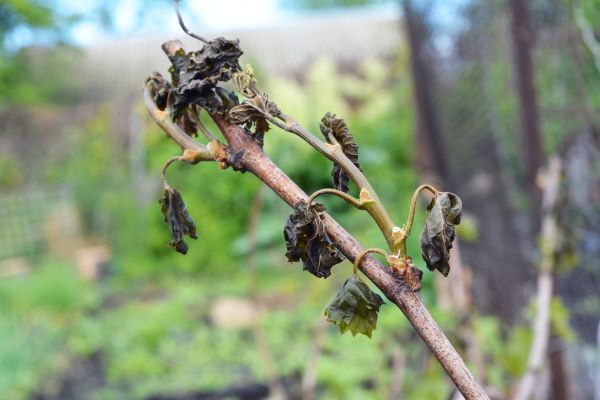June 5, 2023
Late Spring Freeze – Next Steps for Insured Crop Policy Holders

The short stretch of warm days in April prompted an early start to the growing season for vineyards and orchards across the Northeast. Many growers weren’t too worried given the mild winter. They thought, “As long as there’s no freeze, we’ll be ok.” Unfortunately, the early morning hours of May 18, 2023, brought those low temperatures that were looming in the back of everyone’s mind.
Some growers were preparing the night before by staging round hay bales throughout their vineyards to be burned overnight. Others drove through the vineyard with their empty sprayer to at least keep the air warm and moving throughout the night. Some listened as their wind machines kicked into action.
As the sun came up and any remaining frost had dissipated, growers were out inspecting the crop. The calls to crop insurance agents started coming and didn’t stop for the next few days. Most damage in the vineyards and orchards was obvious. Some took a day or so to assess. There was anywhere from 10% to 100% damage – the reports varied depending on the area and elevation. The “banana belt” of the Finger Lakes seemed to have come out unscathed. Elsewhere, temperatures as low as 24 degrees were reported. The disappointment in the growers’ voices was deafening.
Certainty in a Dire Situation
Those with crop insurance at least had some reassurance of their policy coming into action. 2022 had paid out multiple indemnities, so while many were expecting a somewhat “normal” crop for 2023, the peace of mind their crop insurance policy provided was one element of certainty in a situation with an unknown outcome.
On average, New York state growers, who insure almost 19,000 acres of grapes, have coverage levels of 70%-75% elected on their policies. This means they need to suffer a 25%-30% loss in order for their policy to react. The initial reports of damage are well above that range. The maximum amount of coverage that can be elected on an individual’s Multi-Peril Crop Insurance (MPCI) policy for the grape crop is 85%.
Next Steps for Insureds
Insureds should notify their crop insurance agents within 72 hours of initial discovery of damage. At that point, someone from the Authorized Insurance Provider’s (AIP) Claims Team will reach out to assign an adjuster and schedule an initial visit. Insureds should expect multiple visits from their adjuster throughout the growing season. Upon harvest, acceptable records* will need to be provided to the adjuster for verification.
Insured’s Responsibilities
An insured does have the responsibility to maintain their vineyard or orchard as they normally would to produce a crop. Now, there is an understanding that there may not be as much application on trees and vines on which the crop has been clearly identified as lost due to an insured peril. However, the insured should be having that conversation with their adjuster. As with any perennial crop, there is normal maintenance that must be completed to have healthy plants for the following year.
Multi-Peril Crop Insurance
The 2023 crop year has already begun for those with crop insurance policies. If you are interested in determining eligibility and obtaining coverage for the 2024 crop year, please contact Crop Growers here, or at 800-234-7012 to speak with a licensed agent in your area.
*see the Crop Insurance Handbook for further information on acceptable records
Crop Growers is an equal opportunity provider.





